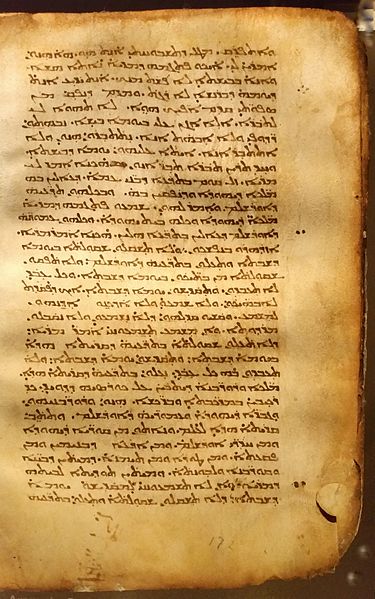The Resurgence of the Gospel, Part One: The Medieval Prologue and the Remapping of the World

This column of the Septuagint is part of the Greek Minor Prophets Scroll from Nahal Hever, copied sometime between 50 B.C.E and A.D. 50. The text is Zechariah 8:18 – 9:7.
Image: Wikimedia Commons
Such a favor allowed the Jews outside of the homeland to institute the synagogue in lands outside of Asia, the lands and islands whose shores bordered the Mediterranean as Egypt, Crete, Syria, Libya, and Asia Minor. Being afar from the temple in Jerusalem, synagogues spread from Libya into Egypt, into Corinth in Greece, north from there to Thessalonica, and eastward to Ephesus and to various locations in Asia Minor now known as Turkey. These synagogues came to be known a synagogues of the Freedmen. Keep this in mind when reading Acts of the Apostles as in Acts 6:9, Luke reports that “some men from what was called the Synagogue of the Freedmen, including Cyrenians and Alexandria, and some from Cilicia and Asia, rose up and argued with Stephen.” These dominant western synagogues of the second dispersion were far more argumentative and protective of the Temple in Jerusalem. Most likely they were recent immigrants into Libya, Egypt, Cilicia, and Ephesus during Pompey’s and Rome’s takeover.
Nonetheless, according to tradition, seventy rabbis in Egypt (during the Ptolemaic period) finished in seventy days the Septuagint, the Greek translation of the Hebrew Scriptures. This is important, as it was the translation of the Old Testament that Paul the Apostle quoted from when he converted and spread the gospel throughout the Eastern Mediterranean world.
In the Mesopotamian countries of Syria and Iraq and what is Azerbaijan today, Syriac and Aramaic became the prevailing languages of both trade and the propagation of the gospel. Portions of the Old Testament are written in Aramaic, as is Ezra, parts of Chronicles, and Daniel. During the years of Jesus’ ministry, Aramaic was the common language of Judaea and in Antioch, Damascus, and all points eastward.

The Peshitta, the Syrian-Aramaic translation of the Bible, on display at the National Library at Givat Ram, Jerusalem.
Image: Wikimedia Commons
All those who heard Peter preach at Pentecost heard the Gospel in the language of their own countries, including Aramaic, a form of Syriac spoken throughout the Near East, and Koine Greek understood throughout the Mediterranean world. Those who heard the gospel and came to Jerusalem for Pentecost and believed and were baptized were the forerunners of the gospel message before the incursions of the apostles and the later evangelists who were to take the gospel to places like Cyrene, Cyprus, Ethiopia, Thessalonica, Corinth, Antioch, Damascus, Elam, Medea, Philippi, and to Rome. Both Alexander the Great and Pompey unwittingly prepared the way, opening and remapping a large part of the known world and much of what was only vaguely known on the frontiers. Without them, how much more difficult would it have been for Stephen, Paul, Peter, John, Andrew, and Nathanael to spread the gospel?
It is interesting to note that the three earliest known languages of the complete Bible which were used to transmit the Old and New Testaments, were Aramaic/Syriac, koinē Greek, and Old Latin. Across Northern Africa, Old Latin was the means of transmitting the Gospel over the first three and a quarter centuries. Koine Greek was the medium of transmission across the Eastern Mediterranean and from Galilee northward to Antioch and toward the Caucasus and the Black Sea. In Damascus, Aleppo, and Palmyra, there were a mixture of Latin, Greek, and Aramaic, speaking peoples but Syriac came to dominate: first the Old Syriac, then the Syriac of the complete Peshitta, the oldest known translation of the complete Bible comprising both the Old and New Testaments. The latter named was the translation used by the evangelists and missionaries who crossed the face of much of Asia west of the Indus river and by those who traversed the Mesopotamian valley toward where Baghdad would later be built.
Category: Church History, Summer 2018


